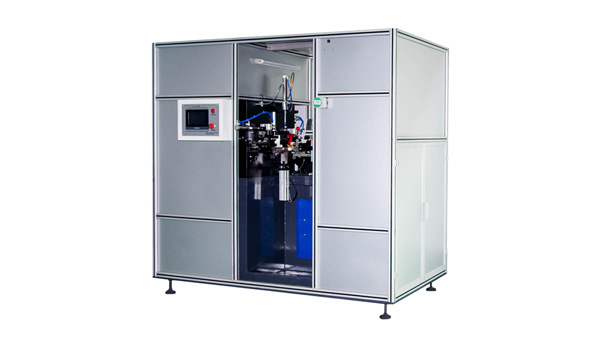By Products
Welding Machine
By Application
Automation Production Line

Search
Electric resistance seam welding, also known as resistance seam welding, is a popular welding technique used in industrial applications. This type of welding is commonly used to join metal sheets or tubes together by applying pressure and electric current to the joining surfaces. In this article, we will delve deep into the world of electric resistance seam welding, including its applications and benefits.
Electric resistance seam welding is a welding process that uses pressure and electric current to join two metallic surfaces. In this process, two metal sheets or tubes are placed between two electrodes, and a high amount of electrical current is passed through them. The high current flow generates heat, which melts the surfaces of the metal being joined. Then, pressure is applied to the joining surfaces, forming a solid bond between them.
Electric resistance seam welding is commonly used in various industrial applications. Some common applications include:
Automotive industry
Electric resistance seam welding is widely used in the automotive industry to join sheet metal components of vehicles. The panels of car doors, hoods, and trunks are joined together using this technique. Resistance seam welding allows for tight and clean joints, making it a favored alternative to traditional welding techniques.
Home appliance industry
Electric resistance seam welding is also used in the home appliance industry to join stainless steel components like refrigerators, washing machines, and dishwashers. This welding technique is preferred over other forms of welding as it creates a visually appealing seam while maintaining structural integrity.
Aviation and aerospace
The aerospace industry relies heavily on electric resistance seam welding for joining tubes and thinner metal sheets. The welding technique creates joints with high strength and tight tolerances, which is essential in the aviation and aerospace industry.

Electric resistance seam welding provides numerous benefits over other welding techniques. Some of the advantages of this process include:
High quality
Electric resistance seam welding produces consistent, high-quality welds, ensuring the integrity of the joint.
High production rate
Resistance seam welding allows for a high production rate, making it an efficient way to join large volumes of metal parts.
Cost-effective
This welding technique is cost-effective, as it eliminates the need for consumables such as filler metals and gases, making it an excellent choice for mass production.
In conclusion, electric resistance seam welding is an essential welding technique used in various industrial applications. It provides high-quality, consistent welds and is cost-effective, making it an efficient way to join metal parts. When considering welding, electric resistance seam welding is a valuable and dependable option that should be considered for its numerous benefits.
No. 28 Jinteng Road, Wuxiang, Yinzhou District, Ningbo
Copyright © NINGBO XIHE AUTOMATION EQUIPMENT CO.,LTD. All Rights Reserved.